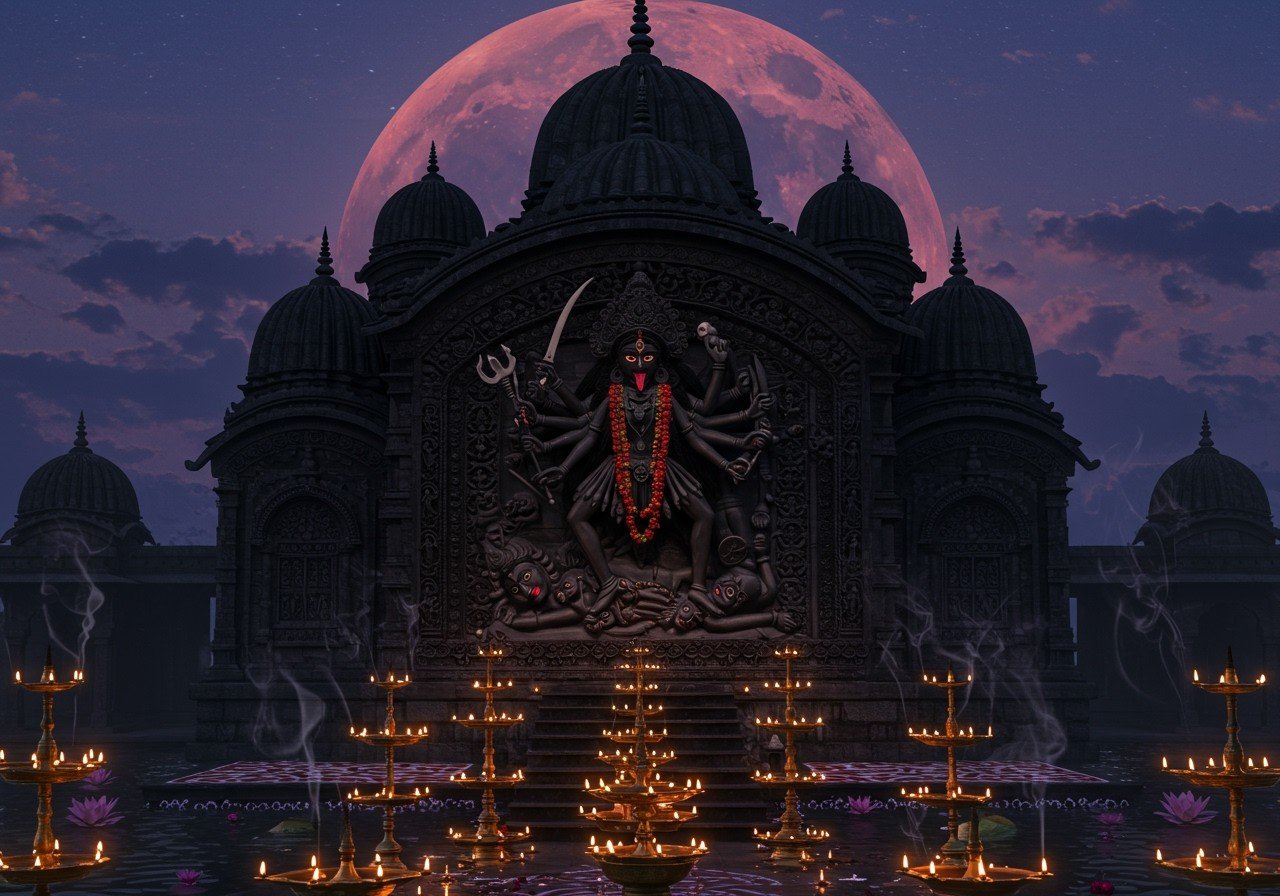
Kali temples, dedicated to the powerful Hindu goddess Kali, are renowned for their unique architectural styles and rich symbolism. This article delves into the intricate architecture of these temples, exploring the profound symbolism embedded within their structures, and emphasizing the importance of preserving these sacred spaces for generations to come. Gaining insights into these aspects provides a deeper understanding of India’s rich spiritual heritage.
Architectural Styles of Kali Temples
Kali temples across India display a diverse range of architectural styles, influenced by regional traditions and historical periods. Some prominent styles include:
- Dravidian Style: Predominant in southern India, this style is characterized by towering gopurams (gateway towers) and intricately carved pillars. Temples such as the Meenakshi Amman Temple showcase the grandeur of this style.
- Nagara Style: Common in northern India, this style is distinguished by its curvilinear shikharas (spires) that resemble beehives. The Kandariya Mahadeva Temple is a prime example of Nagara architecture.
- Kalinga Architecture: Found in Odisha, this style features rekha deuls (curvilinear towers) and pidha deuls (stepped pyramidal structures). The Konark Sun Temple exemplifies Kalinga architecture.
- Bengal Style: Recognizable for its chala (curved roof) and terracotta embellishments, this style reflects local craftsmanship. The Dakshineswar Kali Temple, built in 1855, is a prominent example of the navaratna style of Bengali temple architecture.
Each style incorporates elements that enhance the spiritual experience of devotees, such as the strategic placement of sanctums and the inclusion of symbolic motifs.
Symbolism in Temple Architecture
The architecture of Kali temples is imbued with symbolic meanings that reflect the attributes and mythology of the goddess:
- Fierce Imagery: Depictions of Kali with multiple arms, a fierce expression, and a garland of skulls symbolize the destruction of evil, the cycle of life and death, and the liberation of the soul. These powerful images evoke both fear and reverence.
- Mandala Layout: The temple layout often follows a mandala design, a spiritual diagram representing the universe and the interconnectedness of all things. This design creates a sacred space for contemplation and spiritual growth.
- Garbhagriha: The main shrine, known as the garbhagriha, symbolizes the womb of creation and the divine presence of the goddess. It is the most sacred part of the temple, where devotees seek blessings and communion with the divine.
- Shikharas: The towering spires, or shikharas, represent Mount Meru, the mythical axis of the universe in Hindu cosmology. They symbolize the ascent of the soul towards enlightenment and liberation.
- Entrance Gateways: Often adorned with guardian figures, the entrance gateways symbolize the threshold between the mundane world and the sacred realm of the temple. They serve as a reminder to leave worldly concerns behind and enter with reverence.
- Colors: Specific colors used in the temple’s décor, such as red and black, hold symbolic meaning. Red represents power, energy, and the life force, while black symbolizes transcendence, the void, and the dissolution of ego.
Preservation of Temple Heritage
Preserving the architectural heritage of Kali temples is essential for maintaining cultural continuity and spiritual identity. Key efforts include:
- Restoration: Repairing damaged structures, such as weathered shikharas and crumbling gopurams, is crucial. This includes addressing water damage to murals and intricate carvings, ensuring the longevity of the temple’s artistry.
- Documentation: Creating digital archives of architectural details, inscriptions, and historical records helps preserve valuable knowledge for future generations. This documentation can aid in restoration efforts and scholarly research.
- Community Involvement: Engaging local communities in preservation efforts ensures that traditional practices and knowledge are respected and maintained. This fosters a sense of ownership and pride in the temple’s heritage.
- Legal Protection: Implementing heritage laws and regulations safeguards these sacred structures from unauthorized alterations or encroachments. This legal framework provides a protective shield against potential threats.
Sustainable tourism practices, such as regulating visitor numbers and promoting responsible behavior, play a vital role in preventing damage to these sacred spaces. Educating the public about the historical and cultural significance of these temples fosters a sense of collective responsibility for their preservation.
Poojn.in: Your Source for Authentic Puja Items
Poojn.in, India’s leading online store for cultural goods and services, offers a wide selection of authentic puja items perfect for Kali devotees. Whether you’re preparing for Kali Puja at home or visiting a temple, Poojn.in provides everything you need:
- Brass Kali Murtis: Find beautifully crafted brass murtis of Maa Kali in various sizes for your home altar. These murtis serve as a focal point for devotion and meditation.
- Red Garments and Offerings: Poojn.in offers a selection of pure cotton red garments and other traditional offerings essential for Kali Puja. These items symbolize devotion and reverence for the goddess.
- Puja Accessories: Explore a range of puja accessories, including diyas, incense holders, and offering plates, to enhance your worship experience. These items are crafted with care and attention to detail.
Visit Poojn.in today to discover a comprehensive collection of high-quality puja items and make your Kali Puja a truly sacred and fulfilling experience.
Conclusion
Kali temples across India stand as magnificent testaments to the country’s rich architectural heritage and deep-rooted spirituality. Each temple, with its unique style and symbolic elements, offers a glimpse into the regional traditions and historical influences that have shaped its creation. From the towering gopurams of the Dravidian style to the terracotta embellishments of the Bengal style, these sacred spaces are more than just places of worship; they are living embodiments of cultural identity and spiritual devotion.


